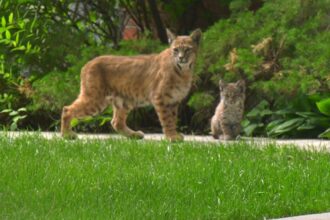In a vibrant display of cultural resilience and heritage, communities across Canada united yesterday to commemorate National Indigenous Peoples Day with unprecedented participation and enthusiasm. From coast to coast to coast, the 2025 celebrations showcased Indigenous cultures through a rich tapestry of traditional ceremonies, contemporary performances, and educational initiatives that drew record crowds in major urban centers and remote communities alike.
“This year’s celebrations represent more than acknowledgment—they signify a genuine step toward reconciliation through cultural understanding,” remarked Elder Margaret Whitefeather at Toronto’s waterfront gathering, where over 15,000 attendees participated in the day-long festivities. The Toronto event featured traditional drumming circles, Indigenous culinary experiences, and artisan markets that created meaningful cultural exchanges between Indigenous and non-Indigenous Canadians.
The federal government announced a $47 million investment package during ceremonies in Ottawa, earmarking funds specifically for Indigenous language preservation programs and cultural heritage initiatives. Prime Minister Chen addressed the gathering, acknowledging that “the path to reconciliation requires not just words but substantive action and sustained investment in Indigenous communities and their distinct cultural identities.”
In Vancouver, the celebrations took on additional significance with the unveiling of a permanent Coast Salish art installation at Stanley Park, created through collaboration between Indigenous artists and civic leaders. The installation, three years in development, represents traditional territories of the Musqueam, Squamish, and Tsleil-Waututh Nations who have inhabited the region for thousands of years.
The educational component of this year’s events was particularly notable, with Canada News reporting that participation from educational institutions increased by 78% compared to previous years. Schools across the country incorporated Indigenous teachings into their curricula, with many hosting elders and knowledge keepers who shared traditional stories and teachings with students.
“What we’re witnessing is a genuine evolution in how Canadians engage with Indigenous cultures,” explained Dr. Thomas Bearcliff, Indigenous Studies professor at University of Toronto. “The attendance numbers reflect growing recognition that Indigenous knowledge systems offer valuable perspectives on contemporary challenges, from environmental sustainability to community-centered governance models.”
The celebrations weren’t limited to urban centers. In Nunavut, communities held traditional games competitions and feasts featuring country foods, while in rural Saskatchewan, powwows attracted participants from neighboring provinces and states. Digital platforms also played a crucial role, with livestreamed events enabling participation from those unable to attend in person, reaching an estimated 3.2 million online viewers.
Indigenous entrepreneurs reported significant economic benefits from the celebrations. The Indigenous Tourism Association of Canada noted a 35% increase in bookings compared to the same period last year, with visitors specifically seeking authentic cultural experiences around the national day of recognition.
“The economic impact extends beyond just the day itself,” said Melissa Crowfoot, CEO of Indigenous Business Network. “These celebrations create lasting connections that support Indigenous businesses year-round and help build sustainable economic development within our communities.”
As darkness fell across the country, many celebrations culminated in storytelling circles and star-watching events that connected contemporary celebrations to millennia-old traditions of knowledge sharing. In Winnipeg, traditional knowledge keeper Joseph Running Wolf explained the significance of the summer solstice timing: “Our ancestors chose this time for gatherings because it represents renewal and the fullness of life—principles that remain at the heart of Indigenous world views.”
As Canadians reflect on this year’s National Indigenous Peoples Day, the question remains: Can this momentum of cultural appreciation and investment translate into meaningful progress on the more challenging aspects of reconciliation, including land claims, resource sharing, and self-governance that Indigenous communities continue to advocate for?










